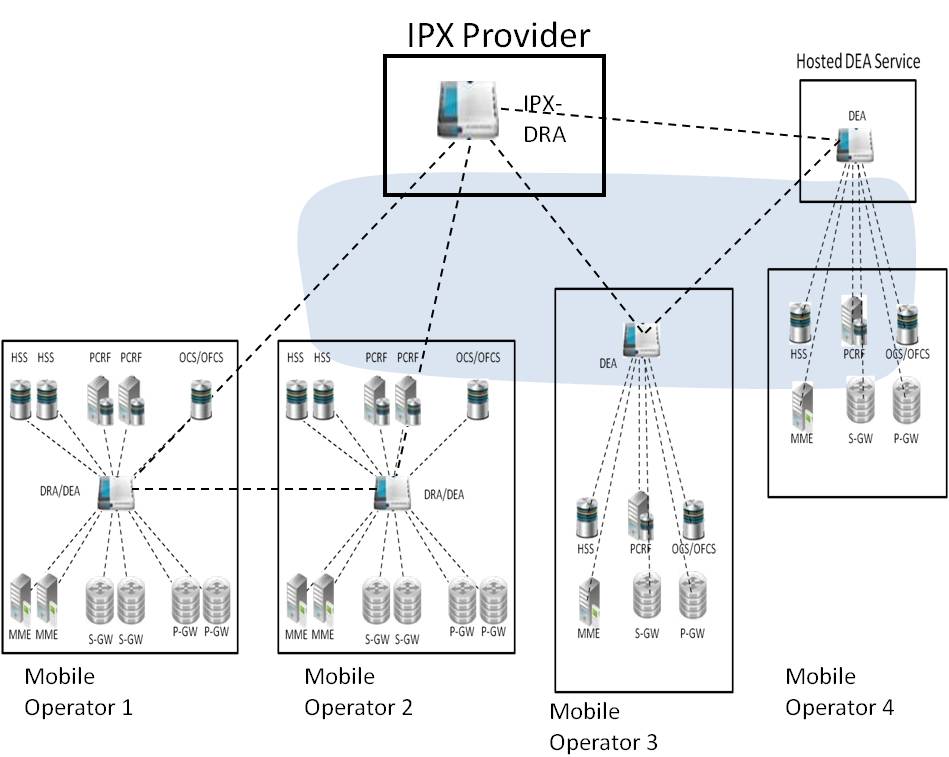By: Anjan Ghosal, President and CEO, Diametriq
Competitive carriers have a dilemma managing their Diameter signaling – the signaling system between all LTE core network elements. One possible option is to purchase the Diameter routing and management service from an IPX provider as a hosted solution. With low traffic volumes this may seem like a very sensible solution and offset the capital investment required to install an in-house Diameter Signaling Controller (DSC) which combines the functions of the Routing Agent (DRA)/ Diameter Edge Agent (DEA). With this goal, many IPX providers have invested in building out Diameter routing capabilities in their network. Some of the services being offered by the IPX vendors include connectivity to their roaming partners, topology hiding, Diameter protocol conversion and interworking between 3G and 4G networks.
While it makes a lot of sense for the operators to get selective Diameter services from their IPX partner, using them for ALL their Diameter traffic management may be counter-productive. Typically the Diameter router in the IPX network is located remotely which implies that all Diameter signaling will have to be back hauled to an external location for processing and routing. This can have a number of negative implications as listed below.
The first requirement is to establish connectivity from each of the operator’s network elements (P-Gateway, HSS, MME, PCRF, S-Gateway) to the remote Diameter router in the IPX network. To maintain integrity of the signaling data as it traverses to the remote destination it is necessary to establish a secure connection which often means implementing an IPsec tunnel from each individual element to the external DSC. This can be a management nightmare and defeat the purpose of ‘topology hiding’. Any modifications to the operator’s network will require close coordination with the IPX provider creating an ongoing challenge.
Second, there is increasing interest among operators to establish peering and ‘local breakout’ thus bypassing their IPX network. While there are still a number of issues around QoS that have to be addressed over the long run, peering will be a reality. Without an in-premise Diameter routing mechanism the operator does not have the option of ‘local breakout’ of their signaling traffic and will have to pass all the traffic to the IPX provider’s network.
The third point to consider is internal network protocol incompatibility. Often networks are multi-vendor and Diameter, being a reasonably new protocol, comes in multiple versions (R8, R10 or R11) and flavors (Ericsson, NSN etc.). Hence heterogeneous networks or even partial network upgrades in one-vendor networks can be highly disruptive when it comes to equipment interoperability. With an in-network Diameter management capability, operators can resolve any protocol mismatches with this device.
Fourth, while we focus on Diameter routing and traffic management, we tend to forget about the wealth of information that is carried by this messaging protocol. Attributes like device type (iPhone, Samsung Galaxy, etc.), access method (Wi-Fi, 3G, 4G) and location information of the terminal is included in these messages. Hence the operator has the option to ‘data mine’ these information elements either to implement differentiating applications (e.g. roamer steering, churn management, etc.) or simply to learn more about the usage patterns of their subscriber base. Without visibility to their signaling traffic, the operator will miss out on a great opportunity to monetize this data.
Finally, as the operator’s network grows there will be needs for load balancing within their network; again something that can be better handled by an in-network load balancing element.
For multiple reasons as enumerated above, it may be beneficial for the operator to consider an in-network Diameter Signaling Controller which incorporates selected DRA and DEA functionality. Diametriq’s Diameter Routing Engine™ (DRE) does just that. Built on an off-the-shelf hardware platform, the DRE can be cost effectively scaled down to as low as 5 TPS. Its flexible routing engine allows operators to define routing rules to enable local breakout. The Application Enablement module enables operators to harvest and manipulate the Diameter message stream and create differentiated services.





